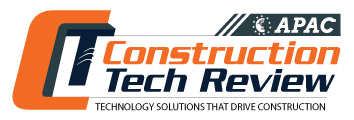THANK YOU FOR SUBSCRIBING

Leveraging AI: Balancing The Risks And Rewards
Richard Mendoza, Senior Director, Data Privacy & Regulatory Compliance at Realogy

 Richard Mendoza, Senior Director, Data Privacy & Regulatory Compliance at Realogy
Richard Mendoza, Senior Director, Data Privacy & Regulatory Compliance at RealogyGenerative AI is rapidly permeating all sectors of business and life. If your organization has yet to embrace AI, it's crucial to recognize that you may be lagging. The evolution of AI is introducing a solution without a clearly defined problem statement for a specific business use case. The anticipated investment to harness this technology will be substantial, placing IT leaders under significant pressure to deliver a return on investment (ROI). The most effective strategy for implementing AI or large-language models (LLM) is to concentrate on achievable goals or rewards while acknowledging the potential risks.
The potential rewards can be significant for organizations that have specific use cases, such as:
Automation:
● Businesses that can streamline or automate repetitive tasks provide organizations with the ability to save time, limit errors, and allow staff to focus on more high-leverage tasks.
Wire Fraud:
● Using AI to monitor transactions and look for anomalies would appear to be an area where this technology can assist. The sheer volume of data these systems can process will allow organizations to monitor and react when an indicator of compromise (IOC) occurs.
Marketing/Trending:
● Predicting what your client base is looking for and being prepared for what's on the horizon is critical to any business. If you are a builder with access to data that would alert your organization of a potential client, then you will want to extract that information and capitalize.
The potential positives of using AI must be balanced with knowing and mitigating the possible risks that this technology presents to any organization:
Privacy and Security Issues:
a)AI-driven surveillance systems can infringe on individual privacy by capturing and analyzing personal data without consent.
b)Striking a balance between security and privacy is crucial to avoid regulatory issues or punitive damages.
c)Being prepared to safeguard the data generated by the AI platforms and react to a potential data breach or event impacting the algorithm and resulting data set.
Bias Caused by Bad Data:
a) AI algorithms learn from historical data, potentially containing biases and impacting the outputs.
b) AI algorithms that train and test with data that includes discriminatory information will perpetuate unethical outcomes.
c) This leads to the steps your organization can take to mitigate the potential risks of utilizing AI and controls that must be leveraged. When it comes to data and the systems that transmit process or house information, the following safeguards should be in place:
● AI Governance/AI Acceptable Use Policy
● AI Conformity Reviews/Data Privacy Impact Assessments
● Incident Response Policy that has carve-outs for generative AI platforms
● Privacy Notice that details your organization's AI use and steps to capture consent
● Documentation of testing standards and testing data oversight
● Following ethical AI standards-Transparency, Explainability, Human oversight
“The most effective strategy for implementing AI or large-language models (LLM) is to concentrate on achievable goals or rewards while acknowledging the potential risks”
In summary, generative AI holds immense promise and potential, but we must address these risks to harness its benefits effectively, transparently and ethically. The goals of any AI-driven platform must have human oversight, be human-centric and not negatively impact humanity. As we continue to advance AI technology, it is essential to develop legal regulations and conditions that govern its development and ensure its use promotes the human condition.
Read Also
Development of the Logistics Warehousing Market in Brazil
Driving Innovation and Preserving Tradition
Operational Leadership VS Field Leadership in the Utility Construction Business
People-First Innovation: Developing Virtual Design and Construction (VDC) Training Programs to Empower Field Team Members
Sustainable Projects: Aligning Business and Purpose in Latin America
Engage Smarter: Why Constraints Matter More Than Hazards

 Copyright © 2025 All Rights Reserved | by:
Copyright © 2025 All Rights Reserved | by: Construction Tech Review
| Subscribe | About us | Sitemap| Editorial Policy| Feedback Policy














